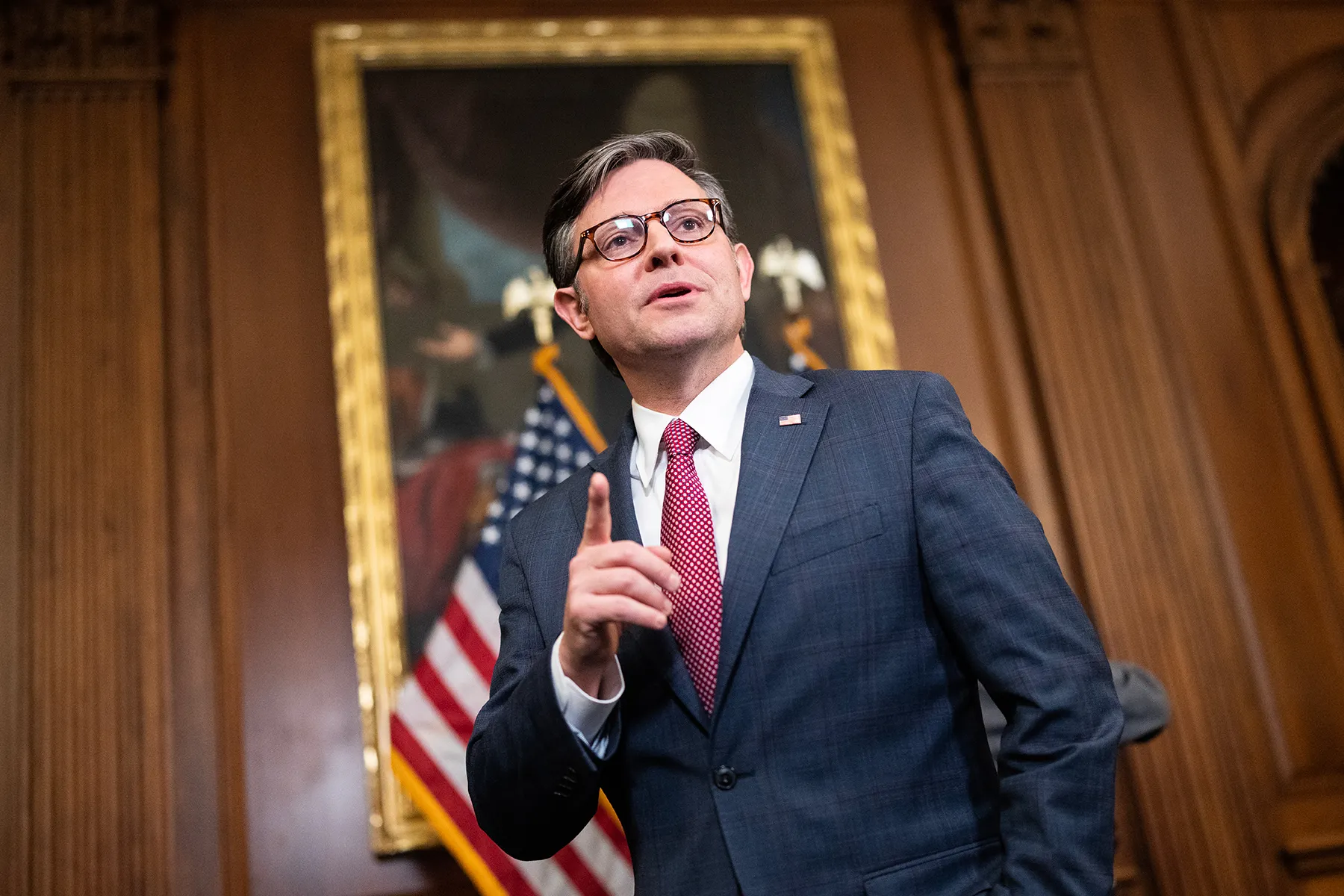In recent public remarks, Speaker of the House Mike Johnson criticized the Democratic Party, placing responsibility on them for healthcare challenges that affect Americans today. He cited the 2010 passage of the Affordable Care Act (ACA), commonly known as “Obamacare,” as the origin of many systemic issues in the U.S. healthcare system. According to Johnson, the law’s creation without any Republican support set the stage for rising insurance premiums and the current debates over federal spending and subsidy programs.
It is factually correct that the ACA was enacted by a Democratic-controlled Congress and signed into law in March 2010 without a single vote from House Republicans. The law introduced sweeping reforms aimed at increasing access to health coverage, improving affordability, and expanding protections for individuals with pre-existing conditions. Among its key provisions were the creation of health insurance marketplaces, the establishment of premium tax credits and cost-sharing reductions, expansion of Medicaid in participating states, and the implementation of coverage requirements that prohibited insurers from denying coverage due to pre-existing conditions.
Johnson’s critique focused on the assertion that these reforms, though politically popular in some circles, have contributed to rising costs for Americans. He described premiums as having “skyrocketed,” placing burdens on insured individuals and taxpayers alike. While it is true that premiums in the ACA marketplaces have increased in recent years, the causes of these increases are complex and multifactorial. Rising underlying healthcare costs, including hospital services, physician fees, specialty drug spending, and general inflation in healthcare expenses, play a significant role. In addition, regulatory uncertainty, shifts in the risk pool as healthier individuals sometimes opt out of coverage, and the scheduled expiration of enhanced premium tax credits have all contributed to higher premiums.
Data from the past several years indicate that while some premiums have risen sharply in specific states or regions, median increases nationwide are generally more moderate than some political claims suggest. In many cases, proposed premium increases range from moderate to significant, depending on state-specific market dynamics, but there is no verified national average increase of 60 percent attributable solely to the ACA. It is also important to note that federal subsidies, which help lower-income individuals afford coverage, have mitigated premium increases for millions of Americans. If these subsidies expire, net costs for enrollees could rise substantially, in some cases more than doubling for certain families, illustrating that subsidy policies, rather than the ACA’s structural design alone, significantly influence affordability.
Speaker Johnson also criticized Democratic leaders for resisting reforms to the ACA and for continuing to subsidize insurance companies. While it is true that enhanced subsidies and cost-sharing reductions remain central to marketplace affordability, the suggestion that Democrats are deliberately using these programs to inflate costs for insurers is a partisan interpretation rather than a factual statement. Legislative and regulatory adjustments to the ACA have been ongoing, and proposals from both parties have attempted to address cost control, coverage expansion, and efficiency improvements.
One key element of Johnson’s critique involves the current federal budget and government funding debates. Enhanced premium tax credits are scheduled to expire, and their continuation has become a point of negotiation between Democrats and Republicans. While Johnson frames this as Democrats leveraging the ACA to influence government operations, the reality is more nuanced. Both parties are negotiating over funding priorities, and healthcare subsidies are just one component of a broader fiscal discussion. The expiration of subsidies is a factual concern that could significantly affect enrollees’ out-of-pocket costs, highlighting the importance of policy decisions independent of partisan rhetoric.
Another area addressed in Johnson’s remarks concerns access to coverage for vulnerable populations. He highlighted efforts to preserve and strengthen Medicaid, which provides coverage to low-income individuals, the elderly, people with disabilities, and pregnant women. Indeed, the ACA’s Medicaid expansion increased eligibility in participating states, substantially reducing the uninsured population. The law’s protections for individuals with pre-existing conditions and financial assistance through tax credits have expanded coverage and mitigated gaps in access. These outcomes illustrate that while premiums may rise, the ACA has delivered measurable benefits in terms of health insurance coverage and access to care for millions of Americans.
Johnson’s rhetoric sometimes framed the ACA and its subsidy programs as inherently harmful to taxpayers and the healthcare system. However, independent analysis suggests that the ACA has multiple effects, some cost-increasing, others cost-saving, and many beneficial for public health. While certain premiums have risen, particularly in the absence of enhanced subsidies, many Americans still pay lower net premiums because of tax credits. Additionally, the law has prevented individuals from being denied coverage due to health status, limited out-of-pocket expenses for vulnerable populations, and reduced the number of uninsured Americans to historically low levels.
The question of who bears responsibility for healthcare cost increases is complicated. While the ACA is a factor, it is not the sole driver of rising premiums or systemic challenges. Broader trends in healthcare spending, including hospital operations, prescription drug costs, labor expenses, and demographic shifts, also influence prices. Moreover, some increases in premiums result from changes in the insurance risk pool or state-level decisions regarding Medicaid expansion. Assigning unilateral blame to the ACA or the Democratic Party oversimplifies a highly complex system.
It is also worth noting that some claims associated with Johnson’s statements—such as suggestions that undocumented immigrants receive free ACA coverage—are inaccurate. Federal law excludes individuals without legal status from ACA subsidies and Medicaid coverage, except in cases of emergency services. Assertions to the contrary reflect political framing rather than factual representation. Similarly, framing the ongoing negotiations over government funding solely as a partisan attempt to fund healthcare subsidies does not account for the wide array of budgetary and policy issues under discussion.
In terms of legislative context, Speaker Johnson emphasized that Republicans have put forward measures aimed at controlling costs, increasing access, and reducing waste and fraud in the healthcare system. While it is true that various Republican proposals have included targeted reforms, these initiatives have been subject to debate, modification, and negotiation. The effectiveness of these measures depends on implementation details, regulatory cooperation, and ongoing adjustments in response to market and population dynamics. Thus, presenting one party as exclusively responsible for “saving healthcare” is a political characterization rather than a comprehensive evaluation of systemic outcomes.
In summary, Speaker Johnson’s remarks contain a mixture of factual statements and partisan interpretation. It is accurate to state that the ACA was enacted without Republican votes, that marketplace premiums have increased, and that subsidy programs play a critical role in affordability. It is also true that negotiations over subsidy extensions are part of ongoing budget discussions. However, the claim that Democrats alone caused the current healthcare crisis, that premiums have universally risen by 60 percent due to the ACA, or that subsidies are intended to enrich insurers, is not supported by independent analysis. Healthcare costs are influenced by multiple factors, including market dynamics, regulatory frameworks, state-level decisions, and broader trends in healthcare spending.
A professional, fact-based evaluation of the issues highlights the following points:
-
The Affordable Care Act expanded coverage, prevented denials for pre-existing conditions, and provided subsidies that reduced net premiums for millions of Americans.
-
Premium increases have occurred in certain markets, but the extent varies widely and is influenced by multiple economic and policy factors beyond the ACA itself.
-
Expiration of enhanced subsidies could dramatically increase net premiums, underscoring the role of legislative decisions in cost outcomes.
-
Medicaid expansion and other provisions of the ACA have improved access for vulnerable populations.
-
Assertions that assign unilateral blame to Democrats for rising costs or characterize subsidy programs as inherently harmful misrepresent the complexity of the system.
Ultimately, while political debates often simplify narratives for rhetorical effect, the factual record shows a more nuanced reality. The ACA has both introduced new costs and achieved significant public health gains. Current premium trends reflect a combination of historical policy, ongoing subsidy decisions, and broader healthcare cost drivers. Public understanding benefits from a careful examination of the law’s effects, distinguishing between political framing and verified outcomes. Speaker Johnson’s remarks, when evaluated against this context, represent a partisan perspective that highlights legitimate concerns about affordability and subsidies, but overstates the law’s singular responsibility for rising costs and the actions of any political party.
By focusing on verifiable facts—legislative history, premium trends, subsidy mechanisms, and coverage outcomes—policymakers, stakeholders, and the public can engage in more informed discussions about the future of healthcare policy in the United States. A measured, fact-based analysis acknowledges both the achievements of the ACA in expanding coverage and protecting vulnerable populations, as well as the legitimate challenges posed by rising costs and policy uncertainties. Such an approach supports constructive debate over reforms and negotiations that address affordability, access, and quality of care for all Americans.

Emily Johnson is a critically acclaimed essayist and novelist known for her thought-provoking works centered on feminism, women’s rights, and modern relationships. Born and raised in Portland, Oregon, Emily grew up with a deep love of books, often spending her afternoons at her local library. She went on to study literature and gender studies at UCLA, where she became deeply involved in activism and began publishing essays in campus journals. Her debut essay collection, Voices Unbound, struck a chord with readers nationwide for its fearless exploration of gender dynamics, identity, and the challenges faced by women in contemporary society. Emily later transitioned into fiction, writing novels that balance compelling storytelling with social commentary. Her protagonists are often strong, multidimensional women navigating love, ambition, and the struggles of everyday life, making her a favorite among readers who crave authentic, relatable narratives. Critics praise her ability to merge personal intimacy with universal themes. Off the page, Emily is an advocate for women in publishing, leading workshops that encourage young female writers to embrace their voices. She lives in Seattle with her partner and two rescue cats, where she continues to write, teach, and inspire a new generation of storytellers.







